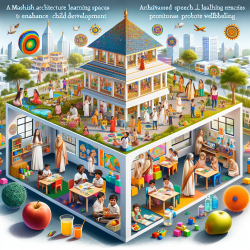Introduction
In recent years, the discourse around child health in low- and middle-income countries has increasingly highlighted the detrimental role of stigma and discrimination. The research article "Reducing Stigma and Discrimination to Improve Child Health and Survival in Low- and Middle-Income Countries: Promising Approaches and Implications for Future Research" provides a comprehensive review of the current landscape, underscoring the need for targeted interventions to mitigate these barriers. This blog aims to distill the insights from the research and suggest actionable steps for practitioners in the field of child health and education.
The Impact of Stigma on Child Health
Stigma and discrimination are not just social issues; they are critical determinants of health outcomes. In the context of child health, these factors can significantly impede access to essential health services and information. The research highlights that while there is a consensus on the importance of addressing stigma, there is a notable gap in the literature regarding effective interventions, particularly outside the realm of HIV-related stigma.
Promising Approaches to Stigma Reduction
The research suggests several promising approaches that practitioners can adopt to reduce stigma and discrimination:
- Information-Based Approaches: Educating communities about the causes and consequences of stigma can lead to increased awareness and reduced prejudice.
- Skills Building: Empowering individuals with the skills to challenge stigma can foster resilience and promote healthier behaviors.
- Counseling and Support: Providing psychosocial support can help individuals cope with the effects of stigma and discrimination.
- Community Engagement: Involving community leaders and stakeholders in stigma reduction efforts can enhance the effectiveness and sustainability of interventions.
Implications for Practitioners
For practitioners in the field of child health and education, integrating stigma reduction strategies into existing programs is crucial. This integration can be achieved by:
- Conducting community workshops to raise awareness about the impact of stigma on child health.
- Collaborating with local leaders to promote inclusive policies and practices.
- Providing training for healthcare and education professionals on how to recognize and address stigma.
Encouraging Further Research
While the research provides a valuable framework for understanding stigma, there is a need for further studies to explore the direct impact of stigma reduction interventions on child health outcomes. Practitioners are encouraged to engage in research activities, document their findings, and share best practices to contribute to the growing body of evidence in this field.
Conclusion
Addressing stigma and discrimination is not just a moral imperative; it is a necessary step towards improving child health outcomes in low- and middle-income countries. By implementing the strategies outlined in the research, practitioners can play a pivotal role in creating more inclusive and supportive environments for children and their families.
To read the original research paper, please follow this link: Reducing Stigma and Discrimination to Improve Child Health and Survival in Low- and Middle-Income Countries: Promising Approaches and Implications for Future Research.










